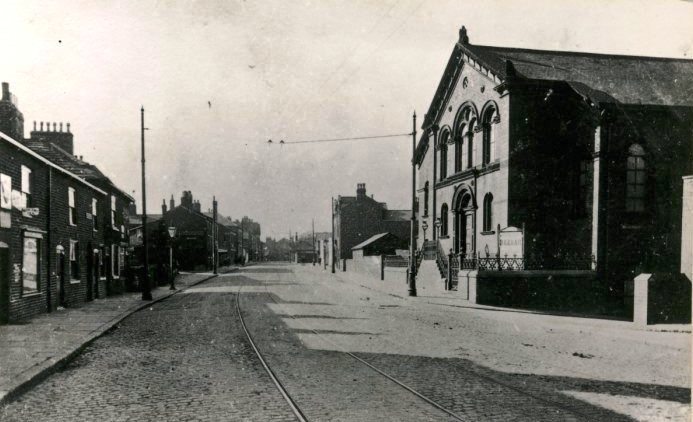
A new display is turning back the clock to explore the fascinating history of communities in Leeds – as told by the people who live there.

The Mapping Leeds display at Leeds City Museum has seen people from different areas of the city contribute ideas and historic images to help the museum tell the story of their area and paint a picture of life in Leeds through the ages.
Areas which feature in the display include Beeston, Cross Gates, Aireborough, Pudsey, Barwick in Elmet, Horsforth and Little London, with each one shown on a banner and placed on the giant map in the museum’s Broderick Hall.
Different community groups who contributed to the display include the Beeston Historical Society, J-Fest and Makor, Irish Arts, Heritage Corner, Corpus Christi Catholic College, Leeds GATE, the Polish Parish, the LGBT Hub and the city’s Asian community.
A series of related objects are also on display in the hall.
Images on display include:
– A photo of Wesleyan Chapel, Town Street, Beeston, pre 1910 courtesy of Beeston Historical Society
– A picture of Martha Chippendale, who was born 1877 and, at the age of 16, joined the Salvation Army and rose to the rank of Brigadier.
She was awarded an MBE after WW1 in recognition of the work done caring for servicemen. Her funeral was held in Yeadon, as a mark of respect all the mills closed on the day. The image is on display courtesy of Aireborough Historical Society.
– An image of Cross Gates from 1890 courtesy of East Leeds History and Archaeology Society
– A photo of Wesleyan Chapel, Town Street, Beeston, pre 1910 courtesy of Beeston Historical Society
-Horsforth Town Street 1905 from museum’s collections by Francis Frith & Co Ltd.
– An image of the much-loved Barwick Maypole being put up using ropes and ladders in 1954, courtesy of Barwick in Elmet Historical Society.
Councillor Brian Selby, Leeds City Council’s lead member for museums and galleries, said:
“This really is a display for the people of Leeds, by the people of Leeds and it’s wonderful that so many of our communities have been involved in bringing it together.
“Leeds is a city with so much history and bringing it all together in this way paints a powerful picture of just how rich and diverse our heritage really is.”
Mapping Leeds can be seen at Leeds City Museum on Millennium Square, which is free to enter, until this Sunday (9 July 2017). It will return at other times through the year.



Lovely to hear of this but why wasn’t ‘The Friends of Stank Hall Barn’ (who are doing a sterling job in trying to protect and preserve the OLDEST building in Beeston if not Leeds itself) invited to provide some input and material to this exhibition. I notice that Beeston Historical Society was but they rend to be more concerned with ‘Cad Beeston Hall’ and the properties around Beeston Town Street rather than this building and its surrounds which are rather tucked away in the southern part of the area and tend to get forgotten about by the rest of the Historical Societies.
After all Stank Hall Barn and Stank Hall itself are rich in history and have links to both the Gunpowder Plot and other conspiracies so has played a large part in the history of both Leeds and the country in general.